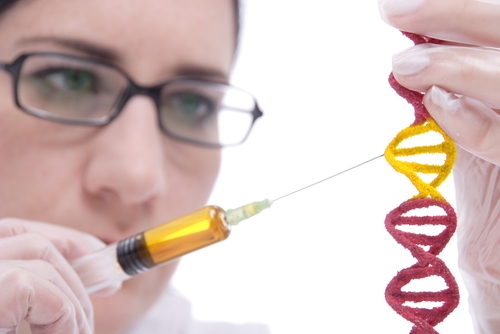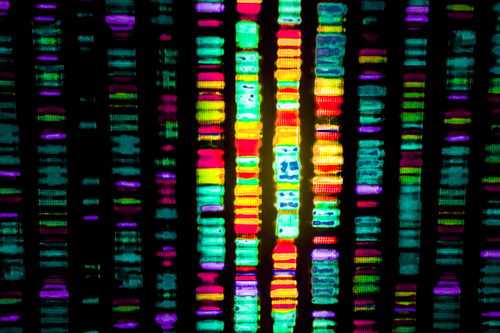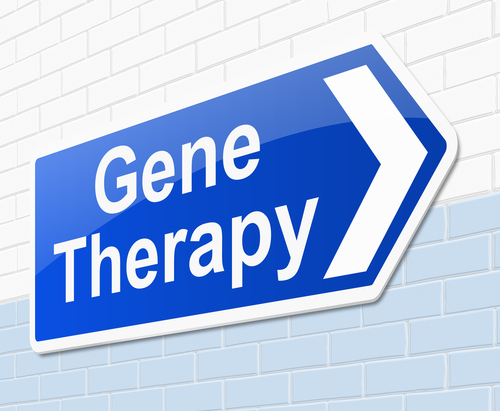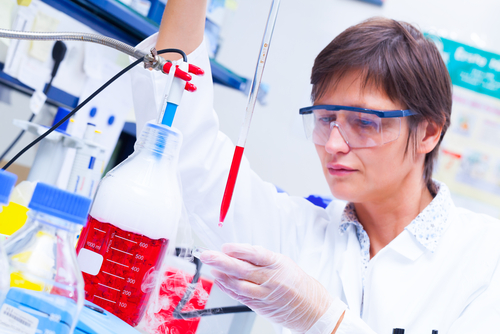Authors:
Development of this technology is links with such names as S. Rogers, T. Friedmann and R. Roblin.
 History:
History:
The concept of gene therapy arose during the 1960s and 1970s. By January 2014, some 2,000 clinical trials had been conducted or approved.
Example:
The first successful case of gene therapy occurred in the 1990s on a young girl named Ashanti Desilva, a victim of the recessive metabolic disorder, ADA deficiency.
Description of the technology:
The objective of gene therapy is to treat, cure or ultimately prevent disease by changing the expression of a person’s genes.

Gene therapy can be targeted to somatic (body) or germ (egg and sperm) cells. In somatic gene therapy the recipient’s genome is changed, but the change is not passed along to the next generation. In germline gene therapy, the parent’s egg or sperm cells are changed with the goal of passing on the changes to their offspring. Germline gene therapy is not being actively investigated, at least in larger animals and humans, although discussion is intense over its value and desirability.
 Gene therapy is still in its infancy. It has the potential to become an important treatment regimen by countering genetic diseases with short life expectancy such as cystic fibrosis. This technology allows to eliminate diseased genes or rescue their normal functions. Furthermore, the transfer procedure of genetic materials allows the addition of new functions to cells such as the production of immune system mediator proteins.
Gene therapy is still in its infancy. It has the potential to become an important treatment regimen by countering genetic diseases with short life expectancy such as cystic fibrosis. This technology allows to eliminate diseased genes or rescue their normal functions. Furthermore, the transfer procedure of genetic materials allows the addition of new functions to cells such as the production of immune system mediator proteins.
Additions and Criticism:
Today, new hopes for controlled and specific genetic manipulation have arisen with the potential use of human embryonic stem cells.  The human embryonic stem cells could be genetically manipulated to introduce the therapeutic gene. This gene may either be active or awaiting later activation once the modified embryonic stem cell has differentiated into the desired cell type.
The human embryonic stem cells could be genetically manipulated to introduce the therapeutic gene. This gene may either be active or awaiting later activation once the modified embryonic stem cell has differentiated into the desired cell type.
It should be noted that some warning cases involving gene therapy show a high risk of genetic manipulation or epigenetic consequences.
Publications:
- Brownborg, Holly M., et al. «Dwarf mice and the aging process." Nature 384.6604 (1996): 33–33.
- Guarente L., Kenyon C. Genetic pathways that regulate ageing in model organisms //Nature. — 2000. — Т. 408. — №. 6809. — С. 255–262.
-
Chang
P. L. Microcapsules as Bio‐organs for Somatic Gene Therapya //Annals of the New York Academy of Sciences. — 1997. — Т. 831. — №. 1. — С. 461–473. - Westphal S. DNA nanoballs boost gene therapy //New Scientist. — 2002. — Т. 19. — С. 15–16.
- Li A. A. et al. Enhancement of myoblast microencapsulation for gene therapy //Journal of Biomedical Materials Research Part B: Applied Biomaterials. — 2006. — Т. 77. — №. 2. — С. 296–306.